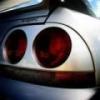Running Lean On An Er34
Announcements
-
Similar Content
-
Latest Posts
-
Hi all, I am in the market for an R200 longnose diff out of a Z31 300ZX, or S12 RSX, DR30 skyline, or similar, in a 3.9 ratio. Preferably a late model one with the M12 crownwheel bolts. The only easy to find advert for one of these was my ad back in 2007 when I sold it on this forum. I sold the diff as I had sold the car it goes to, but as it turns out, after 18 years I got the car back late last year, so now I'm looking for the diff ! If anyone knows where to find a longnose R200 LSD with the M12 crownwheel bolts, drop me a line at [email protected] - Bonus paid if soomeone comes up with the original diff (stranger things have happened !). Cheers Ben D
-
Hi everyone, I used to post here a bit from 2004-2013, when I owned various Nissans, in particular my S12 RSX gazelle, which was sold in 2007. As luck would have it, after an 18 year hiatus, the car found its way back to me last year, and over the past 11 months I have had the pleasure of restoring it with my kids. One thing that I am after in particular is a 3.9 ratio R200 LSD for it. I actually sold the one out of the car here back in 2007 , and it would be incredible if I could track down who I sold it to, so I can see how they have progressed over the years (and to be honest, to see whether I can get the diff back !). Anyways, hi all and let me know "where are the R200 Longnose diffs all at these days ? Cheers Ben D
-
Arms will be the same as the G35 or 350Z, but as above, there was a change in the lower control arm where it connects to the ball joint. That said, you can remove the ball joint cone from your old ball joints and fit them to the new ball joints. To be honest, I didn't think the ball joints themselves were different. The main ball joint is a bit awkward to replace, you really need to remove the steering knuckle to press out the old one. Some people have used tools to remove it in place, but it just seemed too hard to get to. If you are going to press out/in that ball joint, then you may as well just replace the bushings in the LCA and the compression rod. You can buy the compression rod bushing from Nissan, but the LCA bushes, you will need to go aftermarket. Much cheaper than buying the whole arm.
-
Ha, well, it's been.... a bit of a journey. Things have taken much longer than I'd hoped. I'll probably put up a thread at some stage. Hopefully soon. The car's not done any kms since my update in June though, put it that way.
-
By Dose Pipe Sutututu · Posted
Here's the chart for fuel pressure vs. current draw, assuming your base fuel pressure is 3 bar and you run like 0.5bar boost on WOT, you should only momentarily hit 9amps here and there. (Ignore my prev post, I cannot read a chart these days it seems)
-





Recommended Posts
Create an account or sign in to comment
You need to be a member in order to leave a comment
Create an account
Sign up for a new account in our community. It's easy!
Register a new accountSign in
Already have an account? Sign in here.
Sign In Now